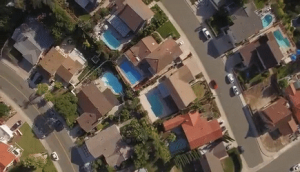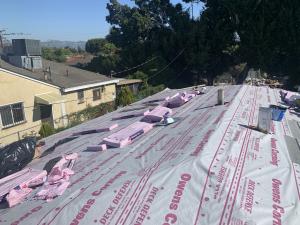Smile Roofing Introduces Satellite-Based Roof Assessment Option for Homeowners in Greater Los Angeles
Smile Roofing introduces satellite-based roof assessments to support early-stage evaluations and planning for homeowners across Greater Los Angeles.
The technology allows Smile Roofing to perform a remote analysis of roof conditions, including size estimates, surface layout, and the presence of visual irregularities, without the need for an on-site visit during the initial stages. The company says this feature is particularly helpful for homeowners seeking fast, no-obligation feedback on the potential need for roof maintenance or replacement, especially in areas with limited property access or scheduling constraints.
“Satellite assessments allow us to engage homeowners early, giving them a better understanding of their roof layout and condition before we schedule a full inspection,” said a spokesperson for Smile Roofing. “It’s a convenient first step in evaluating the next course of action.”
The service involves reviewing satellite imagery alongside available property data to produce measurements, slope assessments, and surface evaluations. While these assessments are not a substitute for a full inspection, they are designed to provide a generalized, visual overview that may support discussions about roof condition, budgeting, or project scope.
Satellite-based assessments may benefit:
1. Homeowners preparing for seasonal roofing concerns
2. Individuals managing property sales or transitions
3. Residents facing delayed site access due to scheduling or travel
4. Preliminary project planning before onsite crew mobilization
Smile Roofing notes that the satellite evaluation tool is part of a broader commitment to transparency and flexibility in the roofing process. As remote service models continue to evolve, tools like this help improve response times and provide property owners with informational resources without requiring immediate physical access.
The company continues to serve the Greater Los Angeles region with a range of roofing services, including shingle and tile installations, flat roof maintenance, leak detection, and structural roof repairs. All work is performed in compliance with California roofing standards and local permitting regulations.
Smile Roofing maintains that any recommendations based on satellite assessments are preliminary in nature, and a full on-site inspection remains necessary to confirm system integrity, detect underlying damage, or identify issues not visible from aerial imaging.
Smile Roofing
Full Insured and Bonded for Your Safety
+1 888-334-1141
support@smile-roofing.com
Visit us on social media:
Instagram
Facebook
YouTube
Legal Disclaimer:
EIN Presswire provides this news content "as is" without warranty of any kind. We do not accept any responsibility or liability for the accuracy, content, images, videos, licenses, completeness, legality, or reliability of the information contained in this article. If you have any complaints or copyright issues related to this article, kindly contact the author above.
Dr. Kevin Sadati Present his Preservation Facelift Technique at Vegas Cosmetic Surgery and UC Irvine
New York Cosmos Relaunches as Fan-Owned, City-Driven Club
MRC Restoration Responds in 25 Minutes to Water Leak, Prevents Major Damage for Bonne Terre Homeowner
Kalendarium
Więcej ważnych informacji
 Jedynka Newserii
Jedynka Newserii

 Jedynka Newserii
Jedynka Newserii

Prawo

Trwają dyskusje nad kształtem unijnego budżetu na lata 2028–2034. Mogą być rozbieżności w kwestii Funduszu Spójności czy dopłat dla rolników
Trwają prace nad wieloletnimi unijnymi ramami finansowymi (WRF), które określą priorytety wydatków UE na lata 2028–2034. W maju Parlament Europejski przegłosował rezolucję w sprawie swojego stanowiska w tej sprawie. Postulaty europarlamentarzystów mają zostać uwzględnione we wniosku Komisji Europejskiej w sprawie WRF, który zostanie opublikowany w lipcu 2025 roku. Wciąż jednak nie ma zgody miedzy państwami członkowskimi, m.in. w zakresie Funduszu Spójności czy budżetu na rolnictwo.
Konsument
35 proc. gospodarstw domowych nie stać na zakup mieszkania nawet na kredyt. Pomóc może wsparcie budownictwa społecznego i uwolnienie gruntów pod zabudowę

W Polsce co roku oddaje się do użytku ok. 200 tys. mieszkań, co oznacza, że w ciągu dekady teoretycznie potrzeby mieszkaniowe społeczeństwa mogłyby zostać zaspokojone. Jednak większość lokali budują deweloperzy na sprzedaż, a 35 proc. gospodarstw domowych nie stać na zakup nawet za pomocą kredytu. Jednocześnie ta grupa zarabia za dużo, by korzystać z mieszkania socjalnego i komunalnego. Zdaniem prof. Bartłomieja Marony z UEK zmniejszeniu skali problemu zaradzić może wyłącznie większa skala budownictwa społecznego zamiast wspierania kolejnymi programami zaciągania kredytów.
Problemy społeczne
Hejt w sieci dotyka coraz więcej dzieci w wieku szkolnym. Rzadko mówią o tym dorosłym

Coraz większa grupa dzieci zaczyna korzystać z internetu już w wieku siedmiu–ośmiu lat – wynika z raportu NASK „Nastolatki 3.0”. Wtedy też stykają się po raz pierwszy z hejtem, którego jest coraz więcej w mediach społecznościowych. Według raportu NASK ponad 2/3 młodych internautów uważa, że mowa nienawiści jest największym problemem w sieci. Co więcej, dzieci rzadko mówią o takich incydentach dorosłym, dlatego tym istotniejsze są narzędzia technologiczne służące ochronie najmłodszych.
Partner serwisu
Szkolenia

Akademia Newserii
Akademia Newserii to projekt, w ramach którego najlepsi polscy dziennikarze biznesowi, giełdowi oraz lifestylowi, a także szkoleniowcy z wieloletnim doświadczeniem dzielą się swoją wiedzą nt. pracy z mediami.













.gif)

 |
| |
| |
|